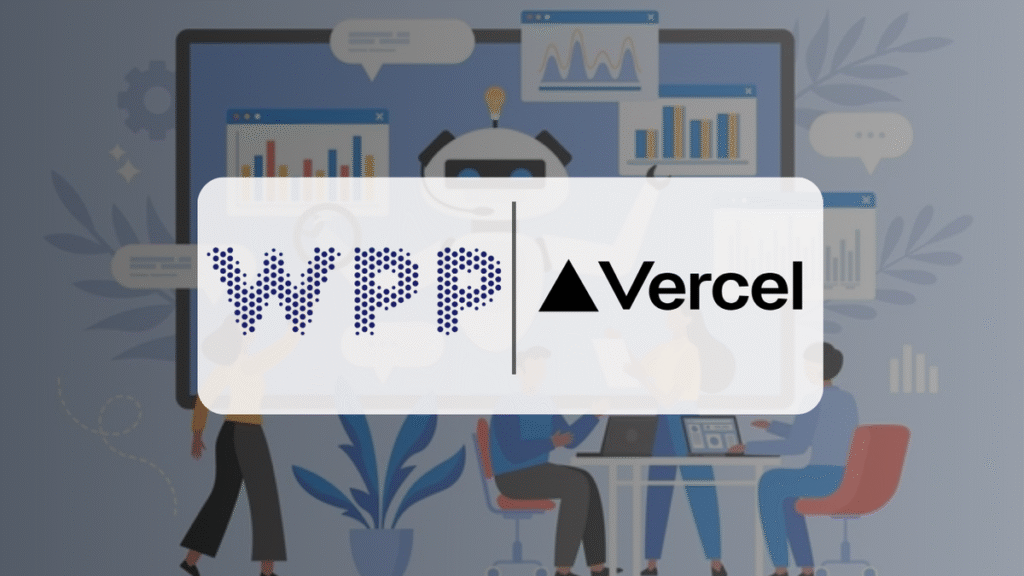In an increasingly competitive business landscape, small and medium-sized businesses (SMBs) are challenged to find ways to boost operational efficiency, reduce costs, and enhance customer engagement. One of the most effective strategies for achieving these goals is the integration of artificial intelligence (AI) into daily operations. Recent trends in partnerships between major companies, such as WPP and Vercel, show how AI-driven workflows are reshaping the future of digital experience and paving increasingly efficient paths for businesses.
The collaboration between WPP, a leading marketing giant, and Vercel, a provider of web platforms, exemplifies the transformative power of AI in streamlining processes. They plan to integrate advanced AI capabilities, which will facilitate the development of digital assets through a method they describe as “vibe coding.” This approach allows users to create web components and applications through natural language programming, resulting in a significant reduction in coding complexity. This innovation is particularly valuable for SMBs that may lack extensive tech resources or specialized staff.
For SMB leaders, adopting AI-driven workflows can substantially improve various aspects of business operations, starting with development efficiency. As demonstrated in WPP’s internal pilot programs and hackathons, early data suggests potential efficiency gains of up to 25%. This statistic is vital for small businesses that often grapple with limited manpower and budget constraints. By leveraging tools that allow team members to produce functioning websites and marketing campaigns from simple text prompts, businesses can save valuable time and enable their staff to focus on higher-level strategic initiatives.
Moreover, the return on investment (ROI) for implementing AI technologies can be significant. By optimizing workflows, businesses can achieve faster turnarounds for projects, reducing the time spent on development from months to mere minutes. For instance, creative teams that utilize Vercel’s tools may find that less time is spent on routine tasks, allowing them to prioritize innovation and client engagement. Implementing AI-driven solutions can also lead to reduced operational costs through optimized resource allocation, ultimately contributing to a healthier bottom line.
To further enhance productivity, SMB leaders can focus on automating routine tasks within their operations. By identifying areas in which repetitive tasks consume considerable time, organizations can integrate AI solutions that manage these processes autonomously. For example, chatbots powered by AI can handle common customer inquiries, freeing up human representatives for more complex communications. This not only improves response times and customer satisfaction but also empowers employees to engage deeply with tasks that require personal interaction, thoughtfulness, and creativity.
In addition to improving workflows, the incorporation of AI can support better decision-making. AI tools can analyze vast sets of data to identify trends and actionable insights that may be overlooked by traditional analysis methods. This capability allows small businesses to make more informed decisions based on real-time data analytics, effectively reducing the risks associated with strategic planning. For instance, marketing departments can leverage AI to personalize campaigns based on customer behavior, leading to more effective outreach and higher conversion rates.
Integrating AI into business operations also enhances collaboration among team members. Collaborative AI tools improve communication by providing a shared platform where ideas can be generated, discussed, and tested in real-time. As AI continues to evolve, SMBs will have access to more sophisticated tools that not only assist in project management but also enable better cohesion across disparate teams. Ensuring that employees are equipped with the necessary skills to use these AI tools effectively will further enhance team engagement and creativity.
Finally, it is important for SMBs to recognize that the implementation of AI should align with overall business goals. For example, if customer engagement is critical to your success, explore AI solutions that prioritize enhancing customer experiences through personalization and automation. Conducting regular assessments to evaluate the effectiveness of these AI-driven initiatives will allow businesses to stay agile and adapt their strategies as the technology continues to evolve.
In conclusion, the partnership between WPP and Vercel serves as a compelling case study for SMB leaders seeking to harness the power of AI. By integrating AI-driven workflows and automation strategies, businesses can realize substantial gains in efficiency, decision-making, and productivity. The focus should be on targeted implementations that align with business objectives and involve employees in the process to ensure a seamless transition to a more digitized operational model.
FlowMind AI Insight: Embracing AI in the workplace not only streamlines operations but also empowers employees to cultivate creativity and innovation. As you consider AI integration, keep in mind that the technology should enhance human capabilities, ultimately leading to a more dynamic and responsive business environment.
Original article: Read here
2025-06-25 07:00:00

